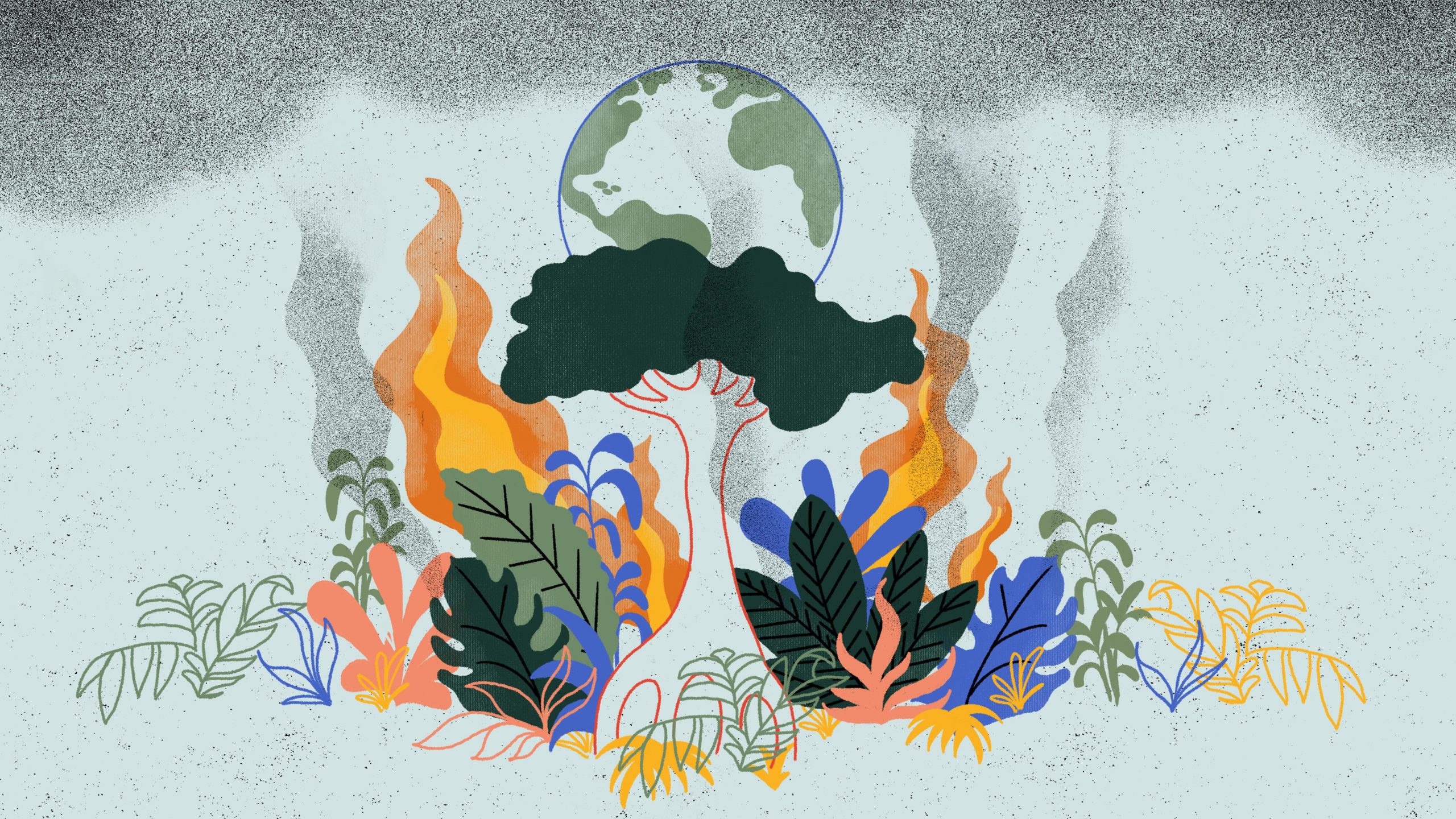In recent years, an increasing number of solutions have been proposed, all aimed at preventing the emission of greenhouse gases into the atmosphere. Carbon storage and sequestration technologies are presented as one of the possible remedies to the increasing increase in greenhouse gas emissions.
This includes, among other things, capturing gases before they exit the open air and storing them in suitable geological formations in the ground.
The problem is that these solutions are currently very expensive and difficult to use on a large scale.
Katherine Botvin and her fellow climate experts argue for a simpler and less expensive solution: invoking the power of nature.
The goal is the same: to avoid as much as possible the release of greenhouse gases from human activities into the atmosphere.
But natural solutions have an advantage over technologies: they also make it possible to adapt to climate change, to reduce the effects of some natural disasters, while enhancing biodiversity.
Catherine Botvin says the natural climate solution is anywhere that a plant can help. It is a forest, woodland, wetland, urban garden, swamp, swamp, meadow or even well-managed farmland, when farmers let go of the roots of the food they grow. Organic matter stores carbon.
It is clear that maintaining these spaces is the first step to enhancing the effectiveness of natural climate solutions.
For example, maintaining a wetland near an urban center would not only serve as a large carbon reservoir, but could also play the role of a large sponge when the level of nearby rivers rises, to reduce the impacts of flooding in populated areas.
The city of New Orleans is a good example of an appreciation of nature for adapting to the effects of climate. Hurricane Katrina in 2005 left 80% of the city’s land under water. Forced to find economic solutions to adapt to climate change, the city of Louisiana is developing a huge green space north of the city, which will serve as a retention basin in the event of a flood.
Natural environments such as forests, urban parks, swamps or fields are also used to control coastal erosion, wildfires, and ambient temperature.
Once there are trees, says the biologist, it gets even colder! We just have to remember this summer’s heat wave to understand the enormous importance of trees to humans. It’s five to ten degrees cooler under the tree than outside! It’s not carbon fair, it’s also a great temperature regulator!
If we want to limit warming to 1.5°C, or even 2°, we must promote natural solutions, they are essential, and they are the least expensive!
, says Catherine Botvin.
Promoting natural climate solutions is one of the actions recommended by the Intergovernmental Panel on Climate Change, which also issued a special report in 2019 on land management. The objective is to demonstrate the adverse effects on the climatic balance caused by the destruction of natural environments in favor of industrial agriculture or urbanization.
We must rebuild and protect natural environments, says Catherine Botvin. It’s the most profitable climate solution! Cultivate, conserve and restore its natural state and adopt a management practice for agricultural land that captures and sequesters carbon dioxide in the soil.
In its report, the Intergovernmental Panel on Climate Change asserts that urbanization has been one of the drivers of the disappearance of natural spaces for several decades. The destruction of young woods, swamps, fallow fields or peat bogs has a direct impact on the climate balance.
A phenomenon that occurs rapidly in an urban area such as the Montreal Metropolitan Community (CMM), which includes 82 municipalities. In this region, the rate of urbanization was five times greater than the rate of protection of natural environments between 1985 and 2015. At this rate, a recent report shows, as many as 36% of the remaining natural environments in the CMM have disappeared due to 2050.
Reducing urban sprawl as much as possible will solve many climate-related problems
, says Catherine Botvin.
Despite all these scientific facts, it does not feel a great will on the part of the political decision-makers to put forward these solutions.
I think there is an interest in natural climate solutions, but there is a class of people who like big machines, because they give the impression that they are creating industries and jobs, says Catherine Botvin. Whereas letting the forest grow is not a great thing.
But in reality, technological solutions are on a very small scale, while natural solutions are on a large scale, she says. Not to mention the benefits of biodiversity! Nature provides us with many essential services for our survival. Plant species nourish us, heal us, warm us, and so much more!

“Subtly charming problem solver. Extreme tv enthusiast. Web scholar. Evil beer expert. Music nerd. Food junkie.”


